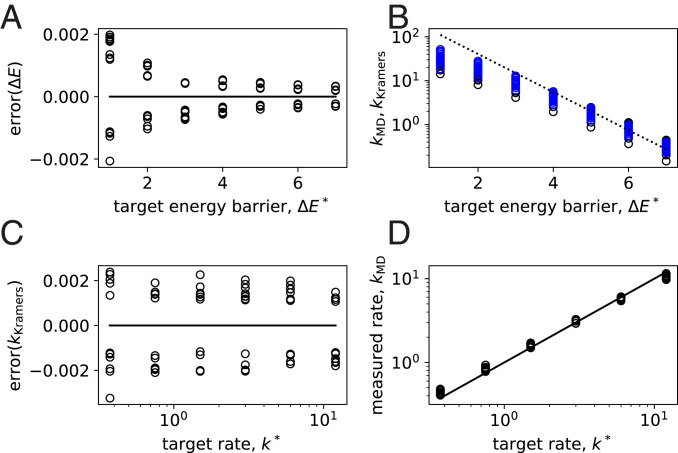Fig. 4.
Training energy barriers and transition rates. (A) After 18 iterations of our procedure, the energy barrier is trained to within of the target barrier . Shown is the error [] as a function of the target. (B) The transition rates measured via MD simulation (; black data) are not exactly proportional to (the dashed line has a slope of ), indicating that the prefactor in Eq. 3 is not constant. However, this prefactor is captured reasonably well by the Kramers approximation (; blue data). (C) After 18 iterations of training on the Kramers rate , we obtain an accuracy within of the target rate . (D) The rates measured via MD simulation agree very well with the target rate (the solid line corresponds to ). Thus, we are able to accurately and quantitatively design the transition kinetics of the seven-particle clusters we consider.

